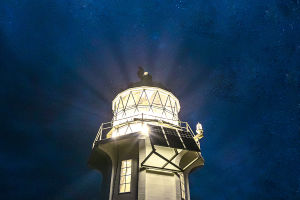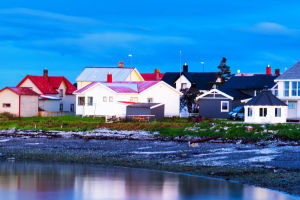Auroras are optical phenomena excited by charged particles blown by solar storms and atoms and molecules in the earth's upper atmosphere at the top of the earth's atmosphere (100-200 kilometers above the ground).
There are three important processes in the formation of auroras: the charged particles produced by the solar wind, the Earth's magnetic field attracting the charged particles to the North and South Poles, and the operation and excitation of atmospheric components.
The so-called "solar wind" is a kind of energy constantly radiated by the Sun to the universe, which is made up of electrons and protons. When these charged particles flow to the Earth and enter the scope of the Earth's magnetic field, they enter the upper atmosphere near the North and South magnetic poles at high speed along the Earth's magnetic field lines, colliding with oxygen atoms, nitrogen molecules, and other particles, resulting in "electromagnetic storms" and "visible light" phenomena, which become the "aurora".
The aurora level is divided into ten levels, mainly according to the degree of disturbance of the Earth's magnetic field. The higher the number, the more active the aurora, that is, the brighter the image seen by the eye, and the more obvious the image taken by the mobile phone.
The brightness of levels 1 or 2 is not obvious, and the camera still needs more than 30 seconds of exposure to recognize it, and the aurora usually disappears in an instant. Usually, levels 3 or 4 can be regarded as an active aurora, showing a light green light, that is, the green light you see.
Auroras with a brightness of more than 5 levels will be very dazzling, the change of color can be clearly seen by the eye, and the color also turns to lavender light. If you are lucky enough to see an 8-10 auroral ridge cover, not only will the picture you see be unforgettable, but also your mobile phone can easily photograph and illuminate it.
Beautiful auroras can be seen in eight places around the world: Alaska, Canada, Nordic (Norway, Sweden, Finland), Iceland, Australia and New Zealand.
Among them, Tromese of Norway is the most famous city in northern Norway and the famous "city of the aurora borealis" in northern Europe.
Tromso is the best place to see the Aurora Borealis in Norway and even in Northern Europe as a whole. Early September to early April is a good time to see the Aurora Borealis, and Tromso's long winter nights greatly increase the chances of spotting the Aurora Borealis.
Downtown Tromso has the largest number of wooden houses in Northern Norway, as well as the Arctic Cathedral, which is Tromso's most famous landmark. Here, the natural landscape is perfectly combined with its active cultural scene, and the coastal mountains around Tromso are neither steep nor high, making it ideal for safe and comfortable hiking.


